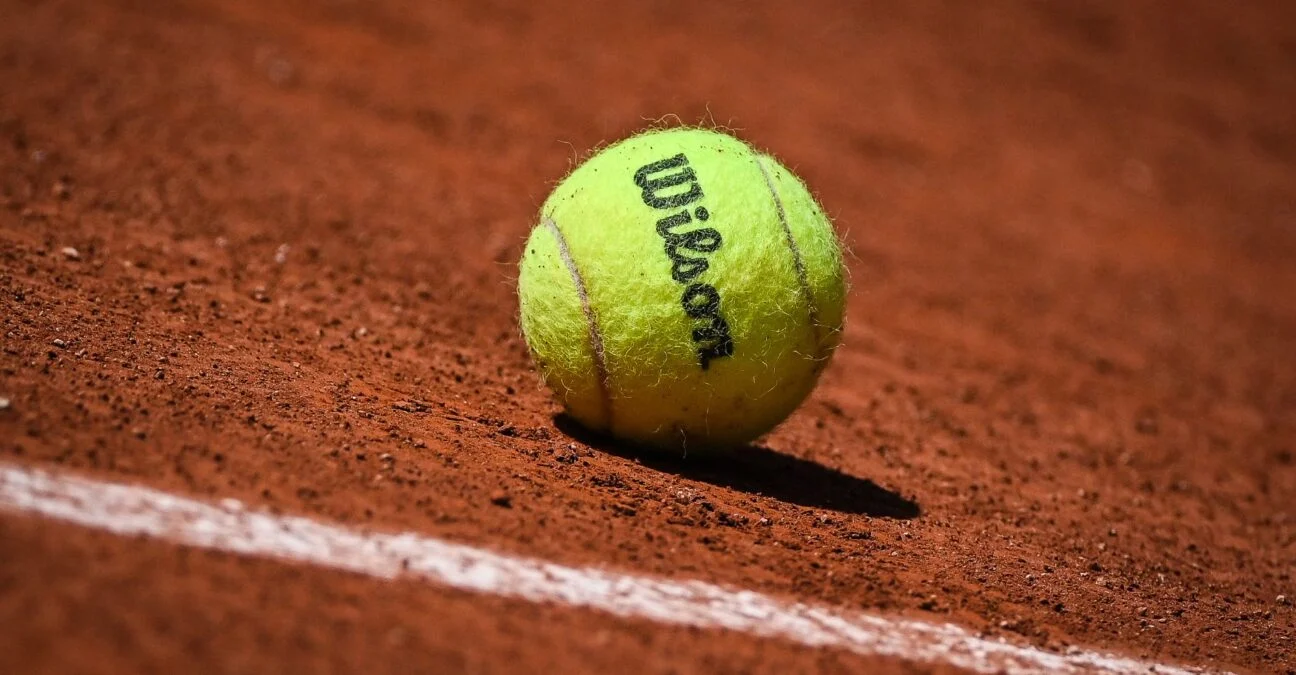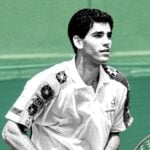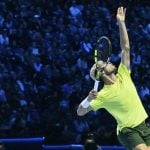Tennis Singles Strategy: Outsmarting Opponents
Winning tennis isn’t always a matter of running the fastest and hitting the hardest. I have seen average-stocked players beat more physically talented players by being tactically more savvy. In a tennis singles match, the court may be the same, but the way that you play each point could be the deciding factor between a … Continued
 Tennis ball – © Zuma / Psnewz
Tennis ball – © Zuma / Psnewz
Winning tennis isn’t always a matter of running the fastest and hitting the hardest. I have seen average-stocked players beat more physically talented players by being tactically more savvy. In a tennis singles match, the court may be the same, but the way that you play each point could be the deciding factor between a win and a walk-off loss. A good tennis singles strategy isn’t a nicety, it’s a necessity.
Let’s break down what does work on the court.
Your Mind Is the First Weapon That You Bring into the
Court
Strategy begins prior to the first serve. Singles tennis isn’t just a physical but a psychological fight as well. With no one playing with you, there’s no one present to reset your attitude and shift the game strategy for you.
That mental aloneness can focus your concentration or ruin your focus. I’ve had players just collapse just because they had fallen apart mentally after missing a break point. A student with a great forehand, great endurability, loses a series of six games because they were unable to get past a blown volley. From that point on, and repeatedly: how do you put your head together? What were you doing well on the last point? What weren’t you? Are you playing your shots, or your opponent?
Win With Your Feet
Footwork isn’t sexy, but it wins games in a silent way. Singles tennis positioning matters. Beginners mess it up by staying in the middle of the baseline and assuming it’s a good angle for all the shots. In reality, you’ll have to move laterally based on your last shot and your opponent’s response. It’s a chess game, not a sprint.
One of the first things that I teach students is the recovery position. If you just hit a cross-court shot, don’t be centred up, you want to recover slightly back in the same direction, away from the higher-percentage shot.
Those little movements are not seen by the spectators, but they get your opponent frustrated into making some risky shots.
Pattern: Sunny, Cloudy, Sunny, Cloudy
Tennis is a sport that pays the deceiver and the patient. Repeatedly striking the same tactical topspin cross-court shot might add a few points, but it makes you predictable. Introducing a drop shot or a slice after a string of exchanges down at the base makes your opponent restart mentally as well as physically.
What works so well in singles is establishing patterns, then breaking them. Consider such a cross-court forehand bomb that’s been taught by me to be consistently hit with a view to playing one down-the-line rocket that overhauls the script. At the professional level as well, watch players like Djokovic establishing a rhythm by repetition and breaking the script by a stunning approach shot or net charge.
Confidence Does Not Result From Skill
One thing they’ve found: how you’re feeling as a tennis player seems more significant than how you’re playing. Confidence will decide how hard you hit second serves, if you take the ball early, and how much you risk.
To my surprise, however, some of my younger athletes swear their confidence isn’t just constructed by practice, but by encouragement off the court as well. Some started utilising social media as a method of
tracking their own progress, and some even decided to buy packages of followers so they would be noticed and could be more confident. Initially, I did not imagine that it would make any difference but having their names noticed provided them with even more motivation for persisting with their sport. It is not an alternative to effort, yet occasionally the push you require is not due to technique, it’s mental.
Serve with a Purpose
Your serve is your first chance at control, but you will still witness players get into a pattern of predictability. Sinking flat first serves down the middle over and over will get you easy points but will open the door for adjustment. That returner will one day time it just right and punish you.
Your strategy in the serve must encompass spin, placement, and variation of speed. Slice wide in the deuce court, kick on the backhand on the ad, these affect your opponent’s rhythm and cause them to be unpredictable.
You needn’t be speeding at 120 mph to control through placement and deception even when you’re not. And don’t forget the worth of the second serves. A serve with a margin for error beats a timid flat serve inviting the opponent to smash it.
Protests Are Warlike Situations
Players tend too often to charge headlong for finishing spots with little forethought. You will not overpower a quick or strong opponent with one shot. You will take a few shots to shift them out of position. That requires setting traps: heavy backhand shots down the line, short angles that get them forward, or body shots that clog their swing.
I had a student who had excellent strokes but could be impatient. He would always look for a winner after two shots. I had him practice ten-ball rallies regardless. With what effect? His shot tolerance had increased, as had his winning performance.
You don’t have to be in a rush. Plan ahead. Plan two shots ahead.
Adapt Or let the Match Slip Away
When Plan A fails, you have a Plan B, and ideally a Plan C. Singles players who strictly stick by their script regardless of what occurs on the court rarely thrive when things go wrong. I had one guy who refused to slice, claiming it was a “defensive” shot. In one of the matches, his opponent had a good forehand but lacked mobility. We changed over to short slicing and lobs, and the match turned around entirely. Being adaptable does not mean blocking off your strengths but discovering alternative ways of using
them.
FAQs
What’s the most important part of a tennis singles strategy for beginners?
Start with mastering court positioning and consistency. You don’t need flashy winners to win matches, just smart movement and solid patterns.
How can I beat a player who runs down everything?
Tire them out with variety. Mix high topspin with short slices, change pace, and force them to move in all directions. Eventually, even the fastest players crack.
Is it okay to play aggressively all the time?
Not unless you’re hitting at 90% accuracy. Aggression without control leads to unforced errors. Be selective, build points first, then go for the kill shot when the opening is clear.









